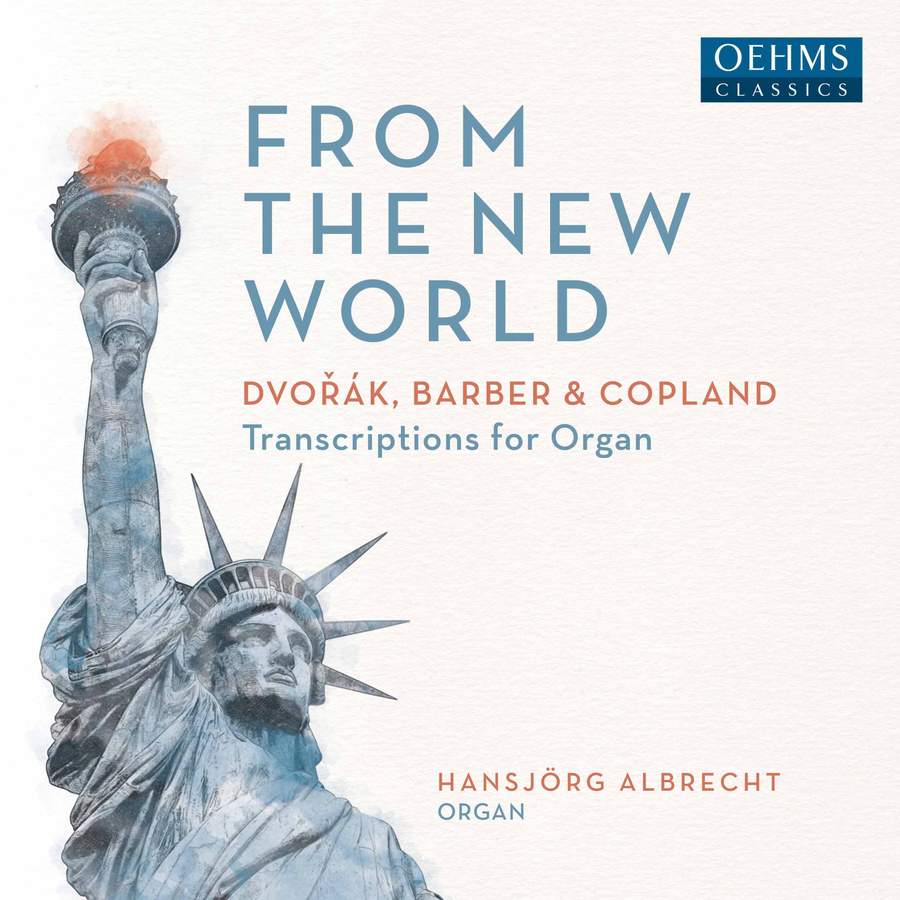DVORAK, BARBER, COPLAND 'From the New World' (Hansjorg Albrecht)
View record and artist detailsRecord and Artist Details
Genre:
Instrumental
Label: Oehms
Magazine Review Date: 02/2021
Media Format: CD or Download
Media Runtime: 75
Mastering:
DDD
Catalogue Number: OC475

Tracks:
| Composition | Artist Credit |
|---|---|
| Carnival |
Antonín Dvořák, Composer
Hansjörg Albrecht, Organ |
| Passacaglia |
Aaron Copland, Composer
Hansjörg Albrecht, Organ |
| Adagio for Strings |
Samuel Barber, Composer
Hansjörg Albrecht, Organ |
| Symphony No. 9, 'From the New World' |
Antonín Dvořák, Composer
Hansjörg Albrecht, Organ |
Author: Marc Rochester
The argument behind Hansjörg Albrecht’s latest release of transcriptions of famous orchestral works, which he dedicates to the memory of Leopold Stokowski, is the recording location: Hamburg. The suggestion, made in his own loquacious booklet note, is that, since so many Europeans embarked on the journey to the New World from Hamburg, some, at least, might have visited one of the city’s churches and heard the organ being played. Not that any of them could have heard this mighty 2009 monster, an amalgam of two organs, one dating from 1962, the other 1914 (and in fact Dvořák set sail for the New World from Bremen rather than Hamburg), but it certainly packs the kind of hefty, bone-shaking punch that calls to mind a mid-Atlantic storm.
Pride of place here are the two arguably greatest works written by a European on American soil and an American on European soil. However, these are preceded by two remarkable transcriptions. First comes a boisterous version of Dvořák’s Carnival overture, made by another European emigrant to America, Edwin Lemare, which shows off Albrecht’s virtuosity. Then comes John Fesperman’s transcription of Copland’s Passacaglia, which gives us a fabulous Cook’s tour of many of the organ’s weirder and more wonderful sounds.
Barber’s Adagio for Strings works very well in this transcription by William Strickland; and while the bulk of the sound is, naturally enough, created by the string tone, Albrecht’s judicious employment of flutes gives it a comfortable, idiomatic feel. My only reservation is the bulky pedal stop which anchors it rather too solidly.
The transcription of Dvořák’s Ninth Symphony is by Zsigmond Szathmáry, and makes considerable demands on both the organ and the player. The generous acoustic of St Michael’s Church, Hamburg, possibly covers a multitude of sins, and perhaps some intricate detail gets lost in this highly atmospheric recording, but Albrecht has a powerful vision for the work and is superb in recreating what are distinctly orchestral textures. He is particularly impressive in conveying the dancelike vigour of the final movement. Above all, he moves across the mind-boggling specification of this organ (by my reckoning, there are some 150 stops to play with) with the fluidity of the River Elbe.
Discover the world's largest classical music catalogue with Presto Music.

Gramophone Digital Club
- Digital Edition
- Digital Archive
- Reviews Database
- Full website access
From £8.75 / month
Subscribe
Gramophone Full Club
- Print Edition
- Digital Edition
- Digital Archive
- Reviews Database
- Full website access
From £11.00 / month
Subscribe
If you are a library, university or other organisation that would be interested in an institutional subscription to Gramophone please click here for further information.




